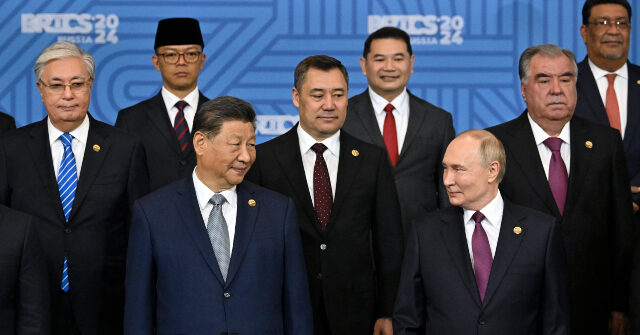In response to U.S. President-elect Donald Trump’s recent tariff threats, Chinese Foreign Ministry spokesman Lin Jian emphasized the BRICS economic bloc’s commitment to cooperation among emerging markets and developing countries. He called on BRICS members to maintain a stance of openness and inclusiveness, opposing confrontation. Lin articulated that BRICS aims to foster common development and prosperity rather than target any third party. He reaffirmed China’s readiness to work with BRICS partners to enhance practical cooperation across various sectors, contributing to the sustainable growth of the global economy.
Echoing China’s sentiments, Russian officials also rejected Trump’s remarks regarding the future of the U.S. dollar as the dominant currency in international trade. Kremlin spokesman Dmitry Peskov suggested that increasing numbers of countries are shifting towards utilizing national currencies, citing the potential negative impact of U.S. coercion through economic muscle. Peskov warned that any force used by the U.S. might expedite this trend, diminishing the dollar’s status as a reserve currency. These statements were issued in the wake of Trump’s warnings that BRICS nations should abandon plans for a new currency to replace the U.S. dollar, which he claimed would face significant tariff repercussions.
Trump’s combative stance included a declaration that the idea of BRICS nations seeking to distance themselves from the dollar was over. He threatened severe tariffs on any country attempting to create a substitute for the U.S. dollar, asserting that nations aiming to undermine the dollar would effectively lose access to the lucrative U.S. market. His rhetoric emphasized an aggressive approach towards maintaining the dollar’s dominance, labeling any attempts by BRICS nations as futile. This statement reflects a clear resolve on the part of the U.S. to retain its financial influence amidst growing talks within BRICS about monetary alternatives.
The discussions surrounding a new BRICS currency are not recent; they trace back over 25 years, though momentum has fluctuated significantly. China’s and Russia’s motivation to push for an alternative to the dollar stems from concerns over U.S. financial dominance, particularly following Russia’s exclusion from the SWIFT international payment system in the wake of the Ukraine conflict. This has prompted a renewed focus on the potential for an alternative for cross-border financial transactions, although the feasibility of this initiative is hindered by internal disagreements within the expanded BRICS membership regarding its structure and practical application.
BRICS has seen its membership widen from the original group of Brazil, Russia, India, China, and South Africa to include five new full members in 2023—Egypt, Iran, Saudi Arabia, the United Arab Emirates, and Ethiopia—alongside 13 additional “partner countries.” This expansion introduces complexities into efforts to develop a cohesive international currency, as varying economic conditions and interests among members can lead to divisions. For instance, India may resist granting China increased influence in financial matters, potentially stalling collaborative currency initiatives in the bloc.
In light of Trump’s remarks, South African officials quickly distanced BRICS from any intent to form a new currency. They clarified that the ongoing discussions among member nations focus instead on using their respective national currencies for trade to avoid fluctuations associated with foreign exchange. South Africa’s Department of International Relations and Cooperation maintained that rather than pursuing a strategy of de-dollarization, the goal is to enhance the use of national currencies in trade, a stance suggesting a cautious approach to international monetary policy amid external pressures from the U.S.

